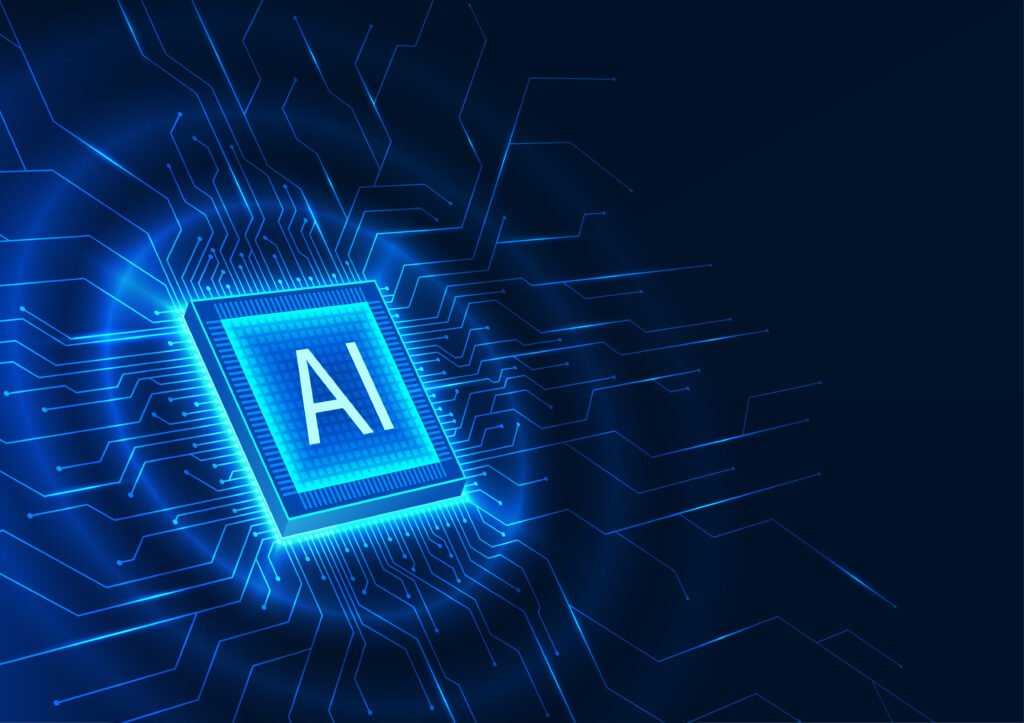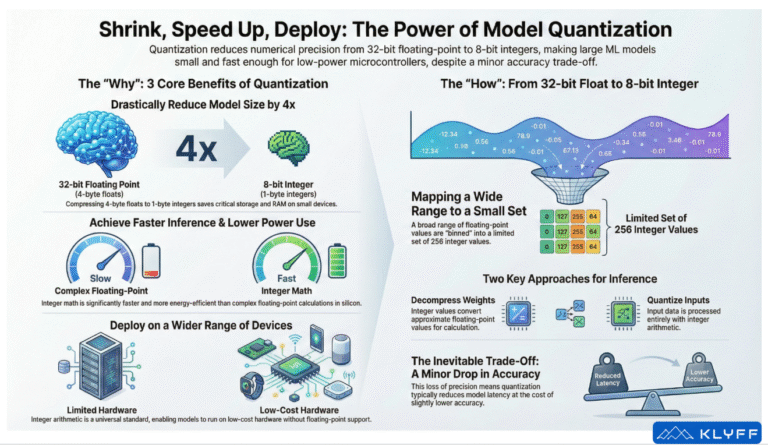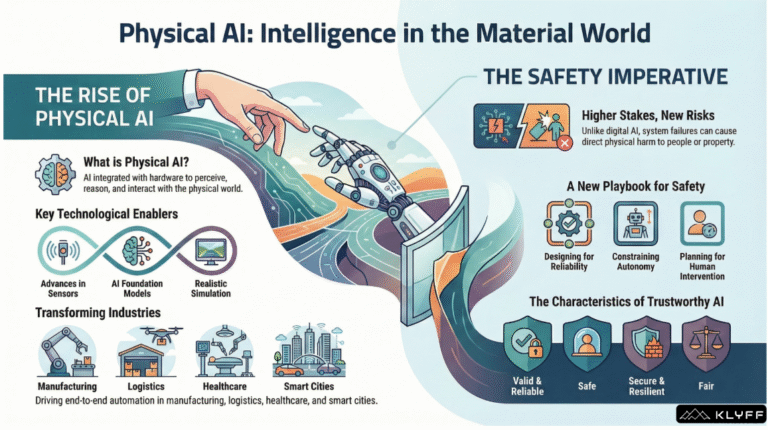
In today’s data-driven world, the traditional model of sending all data to a centralized cloud for processing is becoming unsustainable. Factors like increasing data volume, demand for real-time insights, and concerns about privacy and security are pushing artificial intelligence (AI) to the “edge.” Edge AI, a transformative approach, brings AI algorithms and models directly to local devices like sensors, cameras, and industrial equipment. For C-suite executives (CXOs), understanding and implementing Edge AI isn’t just a technical consideration; it’s a strategic imperative that can redefine operational efficiency, innovation, and competitive advantage.
What Is Edge AI and Why It Matters
Edge AI is the fusion of AI and edge computing. While traditional AI relies on massive, centralized cloud servers to process data and run complex models, Edge AI performs these tasks locally on the device where the data is generated. This on-device processing is crucial for applications where latency (the delay in data transmission) is a critical factor. By eliminating the need to send data back and forth to a distant data center, Edge AI enables real-time decision-making, which is vital for use cases like autonomous vehicles, industrial automation, and smart city infrastructure.
Think of it this way: Cloud AI is like a central brain that receives all the information from its various body parts, processes it, and then sends back commands. Edge AI, on the other hand, gives each body part its own, smaller brain capable of making quick, localized decisions.
The Business Case for Edge AI
For CXOs, the decision to invest in Edge AI is driven by tangible business benefits that directly impact the bottom line and strategic growth.
- Low Latency and Real-Time Insights: In scenarios where a split-second decision can prevent an accident, optimize a production line, or save a life, latency is the enemy. Edge AI’s on-device processing ensures that insights are generated and acted upon instantly, enabling a new class of time-critical applications.
- Enhanced Security and Privacy: By processing sensitive data locally, Edge AI significantly reduces the risk of data breaches that can occur during transmission to the cloud. This is particularly important for industries like healthcare and finance, where data privacy regulations are stringent.
- Bandwidth and Cost Optimization: The sheer volume of data generated by modern devices—like high-definition video from surveillance cameras or sensor data from thousands of IoT devices—can overwhelm network bandwidth and lead to exorbitant cloud storage and processing costs. Edge AI addresses this by sending only critical insights or filtered data to the cloud, dramatically reducing bandwidth usage and associated operational expenses.
- Operational Reliability: Edge AI systems can operate autonomously, even in areas with limited or no internet connectivity. This ensures continuous operation in remote locations, on factory floors with unreliable Wi-Fi, or in mobile assets, providing a level of reliability that cloud-dependent systems cannot match.
Edge AI vs. Cloud AI: A Strategic Choice
The choice isn’t about one replacing the other; it’s about a hybrid model that leverages the strengths of both.
| Feature | Edge AI | Cloud AI |
| Data Processing | On-device, near the data source. | On a remote, centralized server. |
| Latency | Extremely low, ideal for real-time applications. | Higher due to data transmission to the cloud. |
| Bandwidth | Low bandwidth consumption. | High bandwidth consumption. |
| Privacy & Security | Data is processed locally, enhancing privacy and security. | Data is transmitted and stored in the cloud, increasing the attack surface. |
| Computational Power | Limited, relies on optimized, lightweight models. | Vast, can handle large, complex models. |
| Cost | High upfront hardware cost, lower long-term operational costs. | Low upfront cost, higher long-term operational costs. |
| Reliability | Operates offline, highly reliable. | Requires a continuous internet connection. |
A common and powerful strategy is to adopt a tiered approach. Edge AI handles immediate, low-latency tasks, while a centralized cloud AI system performs complex, long-term analytics, model training, and data archiving. For example, a retail store’s Edge AI cameras can process video in real time to detect theft, while the aggregated data from all stores is sent to the cloud for strategic analysis of customer behavior and store layout optimization.
Key Use Cases and Industry Applications
Edge AI is already revolutionizing industries and creating new business models.
- Manufacturing and Industrial IoT: Edge AI is the backbone of Industry 4.0. It enables predictive maintenance by analyzing sensor data from machinery in real time to detect anomalies and predict failures before they happen. It also powers automated quality control by using computer vision to inspect products on the assembly line, ensuring consistency and reducing waste.
- Automotive and Transportation: Self-driving cars rely on Edge AI to make instantaneous decisions. The car’s AI system processes data from cameras, lidar, and radar on-board to detect pedestrians, other vehicles, and road conditions. A millisecond of latency could be the difference between life and death.
- Retail: Edge AI helps brick-and-mortar stores compete with e-commerce. It powers smart cameras for real-time inventory management and allows for personalized customer experiences through in-store analytics. Applications like smart shopping carts and frictionless checkout use Edge AI to identify items and process payments on the spot.
- Healthcare: In hospitals and clinics, Edge AI on medical devices can monitor patients’ vital signs and alert healthcare providers to critical changes in real time. This enables continuous, remote patient monitoring without compromising data privacy.
- Agriculture: In smart farming, Edge AI on drones and farm equipment can analyze crop health, soil conditions, and pest infestation in real-time, allowing for precision agriculture that optimizes resource use and increases yield.
The Challenges and How to Overcome Them
Implementing an Edge AI strategy is not without its challenges. CXOs must be prepared to address them head-on.
- Hardware Limitations: Edge devices have limited computational power, storage, and energy. This requires using highly optimized, lightweight AI models.
- Solution: Partner with vendors that specialize in purpose-built AI hardware, such as GPUs and ASICs, designed for the edge. Employ model optimization techniques like quantization (reducing the precision of numbers in the model) and pruning (removing redundant connections) to make models smaller and faster.
- Deployment and Management: Deploying, updating, and managing a fleet of thousands of distributed Edge AI devices can be a logistical nightmare.
- Solution: Invest in a robust MLOps (Machine Learning Operations) platform that provides a unified, centralized system for managing the entire AI lifecycle, from model development to deployment and monitoring on the edge.
- Security: While Edge AI enhances privacy, it also creates new security vulnerabilities. The physical accessibility of edge devices makes them susceptible to tampering and theft.
- Solution: Implement a zero-trust security model with hardware-based encryption, secure boot mechanisms, and continuous monitoring to ensure the integrity of both the device and the data.
- Skills Gap: There is a significant talent shortage in the specialized field of Edge AI engineering.
- Solution: Focus on upskilling existing IT and engineering teams and strategically hire talent with expertise in embedded systems, machine learning, and hardware optimization.
Building Your Edge AI Strategy: A Roadmap for CXOs
- Define the Business Problem: Don’t adopt Edge AI for its own sake. Identify a specific, high-impact business problem that can only be solved with real-time, on-device intelligence. Is it about reducing latency, improving safety, or cutting costs?
- Start Small with a Pilot Project: Select a manageable pilot project to test the technology and demonstrate value. Choose a use case with clear metrics for success, such as reducing downtime in a single production line or improving the accuracy of a single security camera.
- Choose the Right Technology Stack: Partner with trusted vendors for both hardware and software. The choice of hardware (e.g., CPU, GPU, ASIC) depends on the specific AI workload. The software stack should include tools for model development, optimization, deployment, and management.
- Plan for Scalability: The success of the pilot will likely lead to a desire to scale. Ensure your infrastructure can handle a growing number of devices and that your MLOps pipeline is built for mass deployment and remote updates.
- Establish a Center of Excellence: Create a cross-functional team that brings together expertise from IT, engineering, and business units. This “Center of Excellence” will champion the Edge AI initiative, share best practices, and drive the cultural shift required for success.
The Future of Edge AI 🚀
The Edge AI market is projected to grow exponentially, with some estimates putting it at over $180 billion by 2032. The future will be defined by the convergence of Edge AI with other emerging technologies. The rollout of 5G networks will provide the low-latency, high-bandwidth connectivity needed to enable more complex hybrid AI models. Advances in hardware will continue to make AI processing more powerful and energy-efficient on smaller devices. Furthermore, the rise of federated learning will enable devices to collaboratively train AI models without sharing raw, private data, further bolstering privacy and security.
For the forward-thinking CXO, Edge AI is not a fleeting trend but a fundamental shift in how businesses will operate. By moving intelligence to the source of data, organizations can unlock new levels of efficiency, responsiveness, and innovation, ensuring they stay ahead in an increasingly connected and data-intensive world. The time to act is now.


